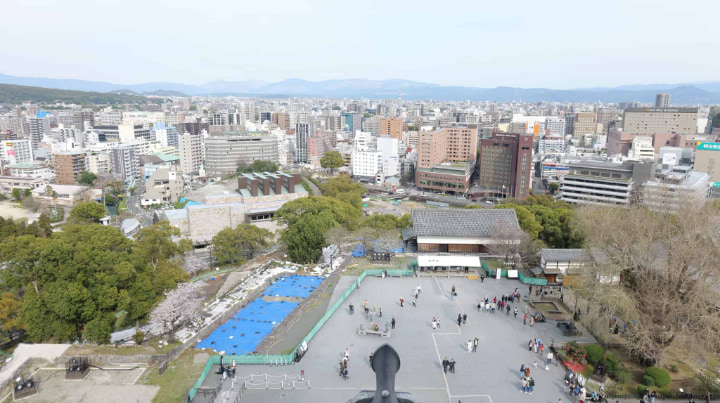Kumamoto Castle
Author: Richard Perkins
Photos/Videos Taken: 2025/03/30
Address: Kumamoto-Shi, Kumamoto,
Chuo-ku, Honmaru 1-1 【860-0002】
Admission Fee: Adult
¥800・(group) ¥640 | Elementary/Middle School
Student ¥300・(group) ¥240 | Anyone Younger Free
Kumamoto Castle is (as its name suggests) a castle in Kumamoto, Kumamoto Prefecture. It is one of the most well-known and popular castles in Japan. This castle is not only loved by the locals, but is also a symbol of Kumamoto Prefecture. It was built by Katō Kiyomasa (a military commander and feudal lord from the Azuchi Momoyama period to the beginning of the Edo period) in 1607. The castle that stands nowadays is slightly different from what it initially was. Originally built nearby where it stands today, it was much smaller. Nowadays written in Japanese as 熊本城 (kumamoto-jō), it was also initially written using the characters 隈本城 (kumamoto-jō). At this time, (with no relation to Chiba Prefecture), it was also referred to as 千葉城 (chiba-jō). Kumamoto Castle was rebuilt after the Battle of Sekigahara (September 15th, 1600). This was done so that Mt. Chausu could be a part of it. But it wasn’t just to make the castle bigger; the reconstruction of Kumamoto Castle was also done to help make vast improvements. When the castle was reconstructed, the characters in its name were changed to the ones used today.
Kumamoto Castle is roughly 1055 square feet, and the one that stands now is a reconstruction. In 1877, just before the Satsuma Rebellion, or Seinan War (January 1st - September 24th, 1877), it was burnt down in a fire. In 1960, it was reconstructed using a steel frame with reinforced rods. Unfortunately, this construction didn’t hold, and Kumamoto Castle underwent damage again during the Kumamoto earthquakes in 2016. These were earthquakes in the Kyūshū region centred around Kumamoto Prefecture. The stone walls surrounding the castle and the 天守閣 (tenshukaku—the largest turret or tower in a Japanese castle) took the most damage. It took roughly five years, but in 2021, repairs made to the tenshukaku were completed, and it’s now open to the public as a museum. Other repairs, such as portions of the stone walls and a few other areas, are still undergoing repairs. It’ll be another few years before all the necessary repairs are completed.
The museum inside Kumamoto Castle has been constructed so that anyone can visit; those with physical disabilities can also easily get inside. There are five floors to explore here. One can learn about the history of Kumamoto Castle and enjoy the historic atmosphere of the tenshukaku.
First Floor・Second Floor
Here, small models of Kumamoto Castle and many historical documents are on display. Some of the armour that the 武士 (bushi or samurai—a class of warriors in Japan that dominated the Japanese government until the Meiji Restoration in 1868) wore in battle can also be seen here. There are also many explanations about Katō Kiyomasa and other historical figures who have a relation to Kumamoto Castle. These two floors give one an idea about what sort of role this castle once played in Japan.
Third Floor
A small-scale model is on display. This model indicates how much damage Kumamoto Castle sustained during the Kumamoto earthquakes.
Fourth Floor
This floor shows signed photographs and words of support from actors, actresses, and other celebrities from the Kyūshū region.
Fifth Floor
This floor is an observation deck giving one a fantastic view of Kumamoto City.
Below Kumamoto Castle is an area filled with restaurants and souvenir shops. Packed with both foreign and Japanese tourists, there are many places here where one can enjoy local cuisine and buy many local products. This is a stylish area where one can enjoy the best of Kumamoto Prefecture, it’s a must-visit for those visiting the prefecture for the first time.
MORIKOBOSHI visited Kumamoto Castle at the end of March, when the cherry blossoms were in full bloom. There are a (seemingly) limitless number of cherry blossom trees around Kumamoto Castle, making for (what feels like) an infinite number of places where one can take some beautiful photographs. This is a great place to visit anytime of the year, but we highly recommend the spring. This is one particular castle that the locals (as mentioned above) love. When you visit Kumamoto Prefecture, be sure to explore this historic castle built by Katō Kiyomasa.
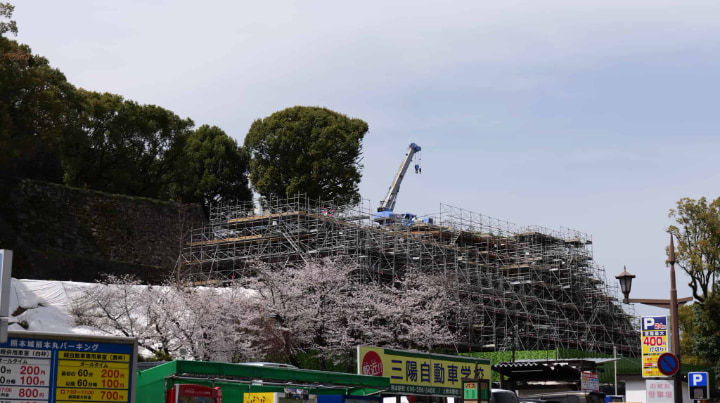
There are still a lot of repairs that need to be done to Kumamoto Castle.
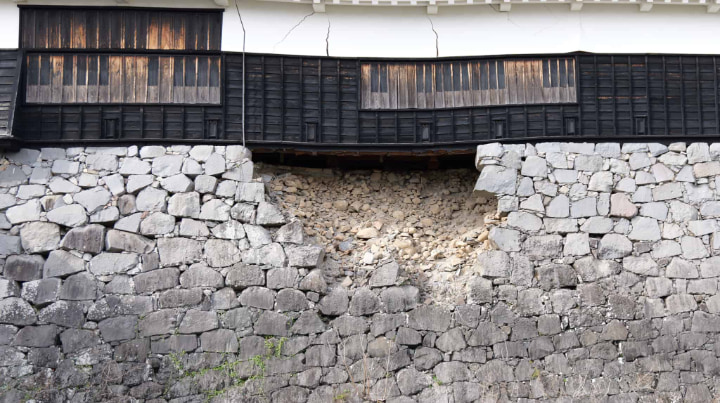
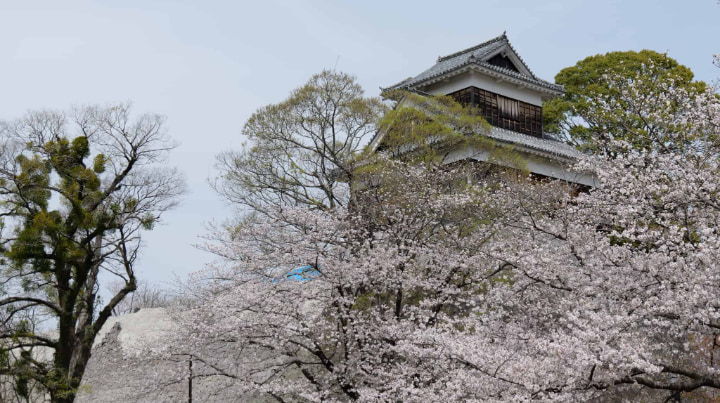
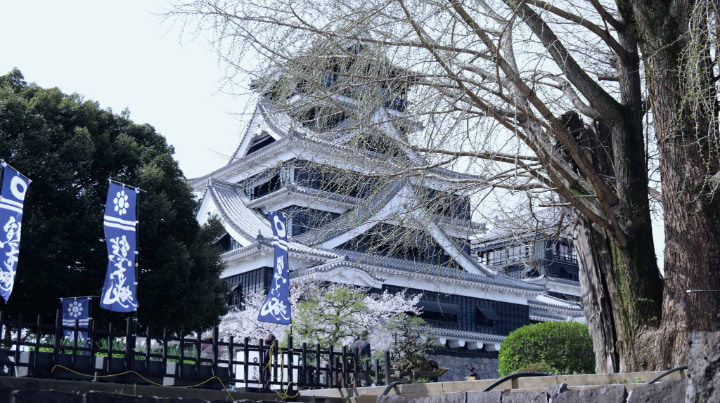
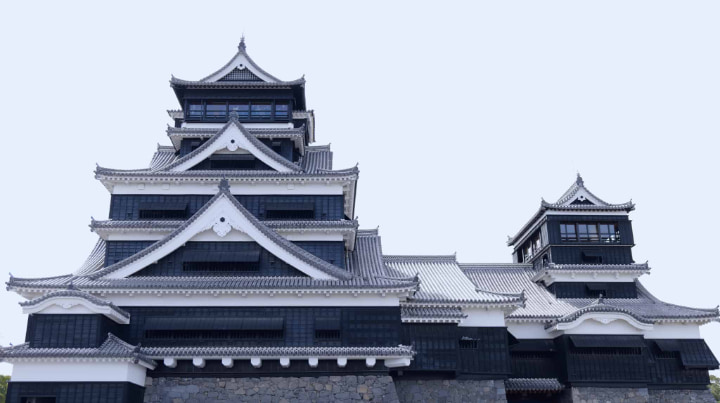
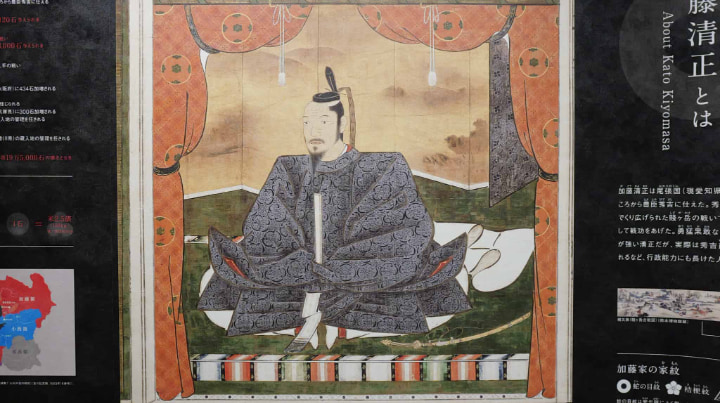
A picture of Katō Kiyomasa.
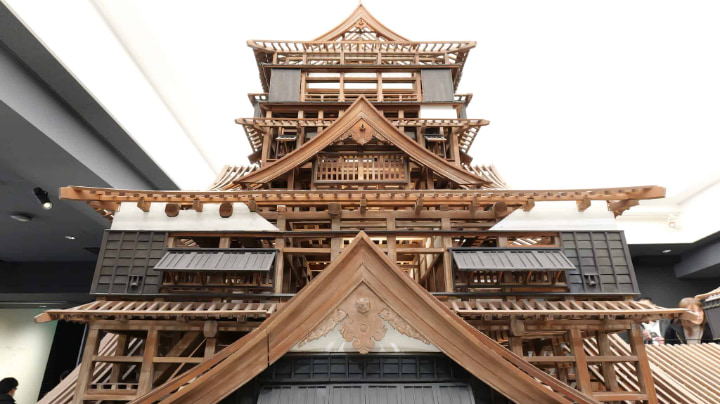
A model of Kumamoto Castle.
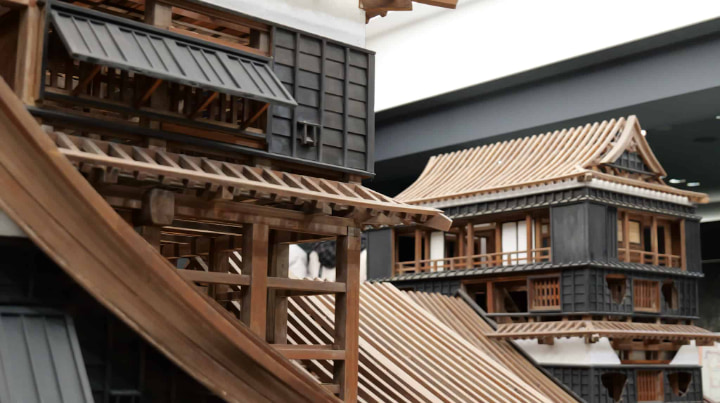

This is a 鯱 (shachihoko). These are objects with the head of a dragon, lion, or tiger and the body of a carp. This one was originally on top of Kumamoto Castle, but the shachihoko can be found on top of other castles and traditional houses across the country. They’re said to be gods that prevent fires by storing water inside themselves and using it when necessary.


This model shows the extent of the Kumamoto earthquakes on Kumamoto Castle.
